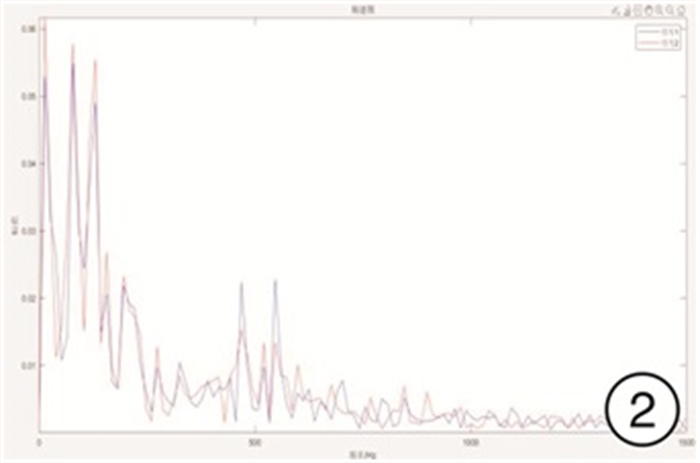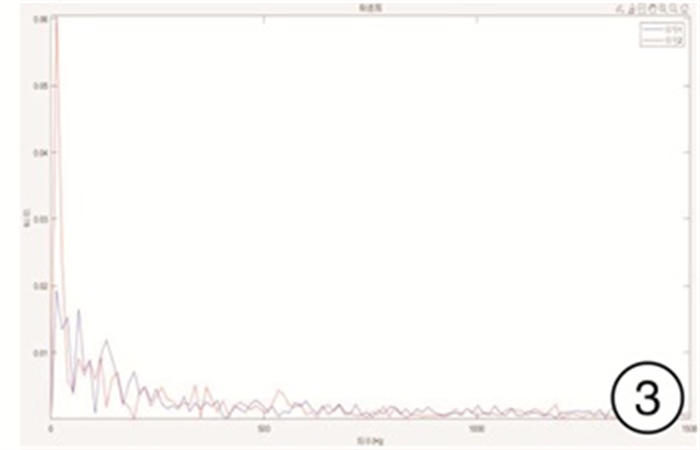Application of speech induced ABR in rehabilitation intervention for hearing impaired children
-
摘要: 目的 探讨听觉康复对其听力在电生理方面的改变,为小龄听障儿童的及早评估和干预提供更多方法。方法 入组2~4岁儿童各20例,耳部无其他异常。将其分为正常听力(组1),异常听力(组2),异常听力进行助听干预1年(组3),异常听力进行助听及语训康复1年(组4)。应用SmartEP听觉诱发电位仪对80例入组儿童在康复训练后进行言语诱发ABR检测和进行“听力障碍儿童听觉、语言能力评估标准及方法”的筛查,比较各组在康复干预后的言语诱发ABR各波潜伏期、频谱振幅,以及各组的评估量表得分。结果 对各组潜伏期进行比较,与正常组比较,其余3组各波潜伏期均延长。其中组2和组3比较各波差异均有统计学意义,组3和组4比较D波、F波差异有统计学意义。对F0处最大振幅与正常组比较,其余3组振幅均降低,且组2与组3、组2与组4、组3与组4比较F0处最大振幅差异均有统计学意义。对听觉语言评估量表的比较,与正常组比较,组3和组4得分明显高于组2识别率。有语训基础的听障儿童各项识别率和正常组儿童接近。组2中D波潜伏期与量表得分及组3中D波、F波得分与量表得分差异有统计学意义。结论 听觉康复对其听力在电生理方面有改变,可作为小龄儿童早评估和早干预的依据。
-
关键词:
- 听障儿童 /
- 言语诱发听性脑干反应
Abstract: Objective Exploring the electrophysiological changes of auditory rehabilitation in young children with hearing impairment, providing more methods for early assessment and intervention.Methods Twenty children aged 2-4 were enrolled, with moderate hearing loss and no other abnormalities in the ears. Divide them into group 1 with normal hearing, group 2 with abnormal hearing, group 3 with abnormal hearing receiving hearing aid intervention for one year, and group 4 with abnormal hearing receiving hearing aid and language training rehabilitation for one year. The SmartEP auditory evoked potential instrument was used to detect speech induced ABR and conduct screening for 'Standards and Evaluating Hearing and Language Abilities of Children with Hearing Impairment in 80 enrolled children after rehabilitation training, and the latency、amplitude of speech induced ABR waveform and evaluation scale scores for each group after rehabilitation intervention were compared.Results Compared with the normal group, the latency of each wave in the other three groups was prolonged. The differences in each wave between Group 2 and Group 3 were statistically significant, while the differences in D and F waves between Group 3 and Group 4 were statistically significant. Compared with the normal group, the maximum amplitude at F0 decreased in the other three groups, and the differences in maximum amplitude between Group 2 and Group 3, Group 2 and Group 4, and Group 3 and Group 4 were statistically significant. Compared with the normal group, the scores of the auditory language assessment scale in the hearing intervention group and the hearing aid plus language training group were significantly higher than those in the abnormal group in terms of recognition rate. The recognition rates of hearing impaired children with language training foundation are similar to those of the normal group of children.Conclusion Auditory rehabilitation can alter the electrophysiological aspects of hearing and serve as a basis for early assessment and intervention in young children.-
Key words:
- hearing impaired children /
- S-ABR
-

-
表 1 各组各波潜伏期
ms,X±S 组别 V波 A波 C波 D波 E波 F波 O波 组1 7.15±0.21 8.28±0.13 18.52±0.20 24.25±0.48 33.35±0.50 41.53±0.68 48.93±0.21 组2 7.64±0.14 8.91±0.19 19.76±0.13 24.00±0.26 33.77±0.14 41.52±0.46 50.00±0.20 组3 7.72±0.23 8.98±0.20 20.67±1.44 26.75±0.60 34.48±0.56 42.69±0.33 50.94±0.47 组4 7.95±0.322) 9.97±0.0081)2) 19.41±0.012) 25.04±0.591)2) 32.93±0.242) 41.78±0.541)2) 49.36±0.052) 与组2比较,1)P < 0.05, 2)P < 0.01。 表 2 各组F0和F1处最大振幅
nV,X±S 组别 F0 Max F1 Max 组1 7.21±0.13 4.23±0.12 组2 4.15±0.21 2.12±0.04 组3 5.19±0.181) 1.96±0.58 组4 5.63±0.121)2) 2.13±0.06 与组2比较,1)P < 0.01;与组3比较,2)P < 0.01。 表 3 听觉能力各项识别率
% 项目 组1 组2 组3 组4 韵母识别率 95 31 86 94 声母识别率 90 30 82 89 表 4 各波潜伏期与识别率相关系数及P值
波型 异常组 异常助听组 异常助听语训组 声母 韵母 声母 韵母 声母 韵母 A波 r -0.800 -0.116 -0.864 0.601 -0.185 -0.243 P 0.200 0.834 0.132 0.399 0.216 0.447 D波 r -0.130 -0.375 0.068 0.295 0.094 0.422 P 0.987 0.625 0.932 0.023 0.546 0.001 F波 r 0.882 -0.592 0 -0.774 -0.139 0.313 P 0.118 0.480 1.000 0.226 0.364 0.001 -
[1] Song JH, Banai K, Russo NM, et al. On the relationship between speech-and nonspeech-evoked auditory brainstem responses[J]. Audiol Neurootol, 2006, 11(4): 233-241. doi: 10.1159/000093058
[2] Rocha-Muniz CN, Befi-Lopes DM, Schochat E. Sensitivity, specificity and efficiency of speech-evoked ABR[J]. Hear Res, 2014, 317: 15-22. doi: 10.1016/j.heares.2014.09.004
[3] Jarollahi F, Valadbeigi A, Jalaei B, et al. Sound-Field Speech Evoked Auditory Brainstem Response in Cochlear-Implant Recipients[J]. J Audiol Otol, 2020, 24(2): 71-78. doi: 10.7874/jao.2019.00353
[4] 孙喜斌, 张芳, 黄鸿雁, 等. 听力障碍儿童言语听觉评估方法[J]. 听力学及言语疾病志, 2009, 17(4): 327-329.
[5] Musacchia G, Ortiz-Mantilla S, Roesler CP, et al. Effects of noise and age on the infant brainstem response to speech[J]. Clin Neurophysiol, 2018, 129(12): 2623-2634. doi: 10.1016/j.clinph.2018.08.005
[6] 张峥嵘, 王枫. 言语声听性脑干反应研究进展[J]. 听力学及言语疾病杂志, 2021, 29(5): 576-579. doi: 10.3969/j.issn.1006-7299.2021.05.024
[7] 王倩, 王燕, 刘志成. Speech-ABR安静及噪声环境下音位的对比研究[J]. 中华耳科学杂志, 2016, 14(5): 634-638. doi: 10.3969/j.issn.1672-2922.2016.05.016
[8] Strait DL, Kraus N. Biological impact of auditory expertise across the life span: musicians as a model of auditory learning[J]. Hear Res, 2014, 308: 109-121. doi: 10.1016/j.heares.2013.08.004
[9] Jarollahi F, Valadbeigi A, Jalaei B, et al. Sound-Field Speech Evoked Auditory Brainstem Response in Cochlear-Implant Recipients[J]. J Audiol Otol, 2020, 24(2): 71-78. doi: 10.7874/jao.2019.00353
[10] 符秋养, 梁勇, 邹岸, 等. 不同听力损失类型青年人言语声诱发听性脑干反应与最大言语识别率关系的探讨[J]. 中华耳鼻咽喉头颈外科杂志, 2016, 51(4): 247-255. doi: 10.3760/cma.j.issn.1673-0860.2016.04.002
[11] Skoe E, Kraus N. Musical training heightens auditory brainstem function during sensitive periods in development[J]. Front Psychol, 2013, 4: 622.
[12] Madrid AM, Walker KA, Smith SB, et al. Relationships between click auditory brainstem response and speech frequency following response with development in infants born preterm[J]. Hear Research, 2021, 8(407): 108277.
[13] Krishnan A, Gandour JT. The role of the auditory brainstem in processing linguistically-relevant pitch patterns[J]. Brain and language, 2009, 110(3): 135-148. doi: 10.1016/j.bandl.2009.03.005
[14] Krishnamurti S, Forrester J, Rutledge C, et al. A case study of the changes in the speech-evoked auditory brainstem response associated with auditory training in children with auditory processing disorders[J]. Int J Pediatr Otorhinolaryngol, 2013, 77(4): 594-604. doi: 10.1016/j.ijporl.2012.12.032
[15] 陈建勇, 朱海月, 沈佳丽, 等. 听力正常青年人普通话可接受噪声级与皮层听觉诱发电位的相关性研究[J]. 临床耳鼻咽喉头颈外科杂志, 2022, 36(9): 679-684. https://lceh.whuhzzs.com/article/doi/10.13201/j.issn.2096-7993.2022.09.006
-





 下载:
下载:

